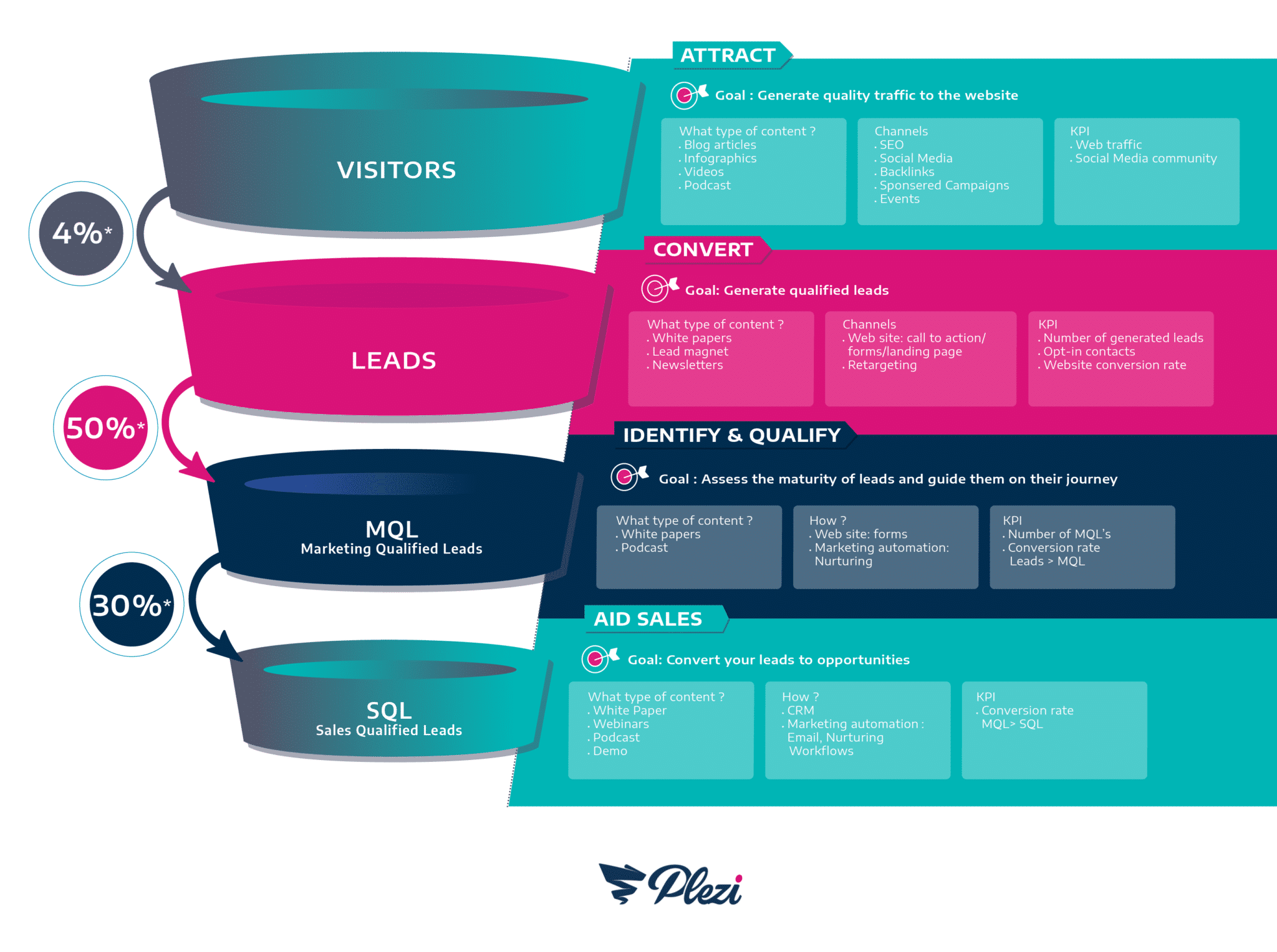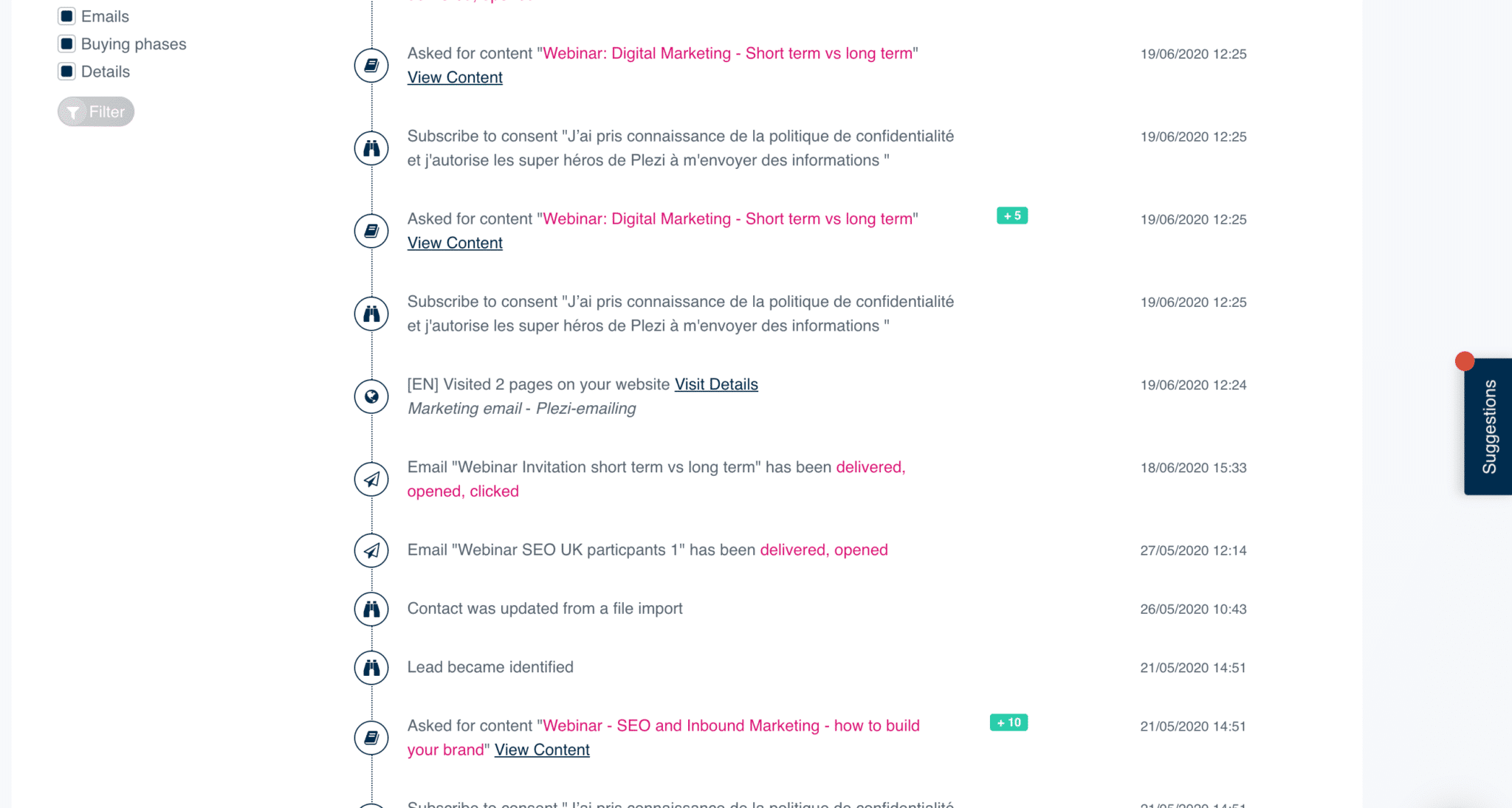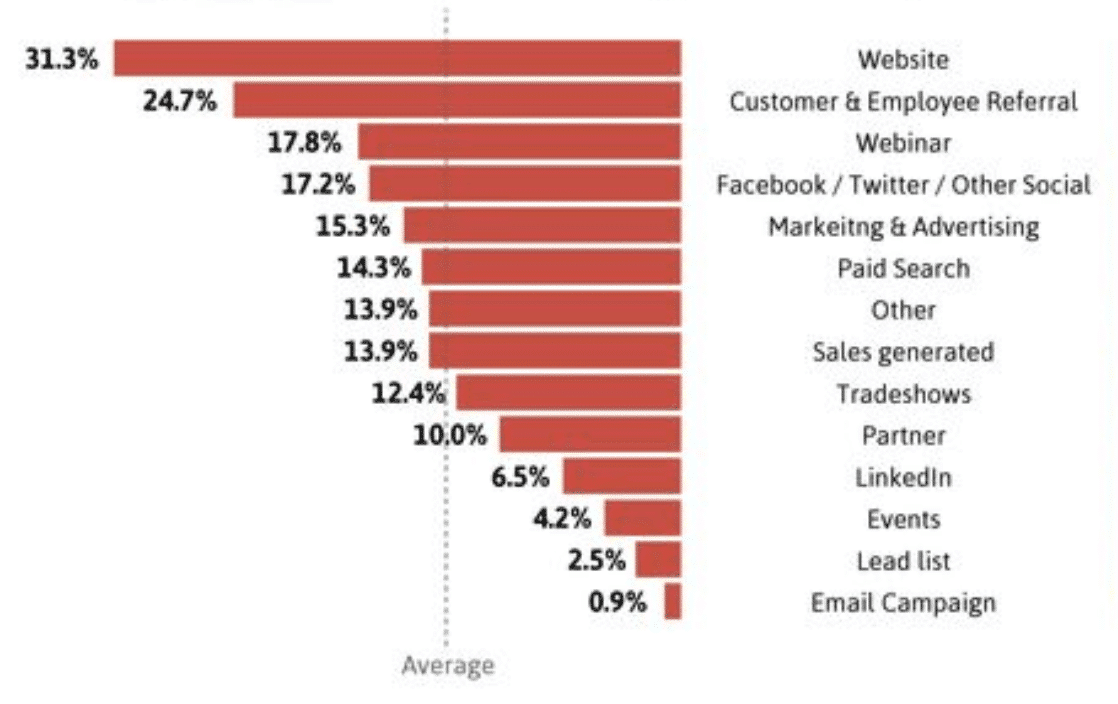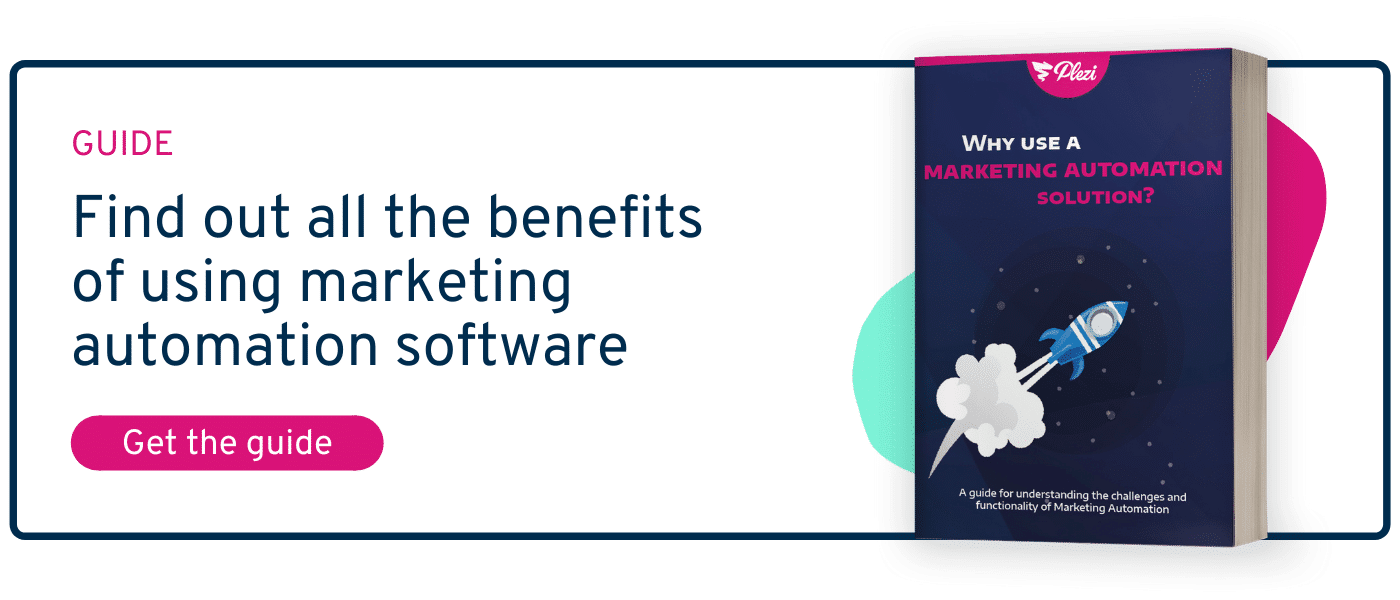When you start using marketing automation, the number of new terms involved can quickly make your head spin: prospect, MQl, SQL, lead, opportunities, deals… So, we decided to roll up our sleeves to give you a highly informative guide to some essential concepts.
Today we’re going to talk about SQLs, or Sales Qualified Leads. We’ve put together:
- A definition;
- Practical elements to help you identify what an SQL is;
- The best practice to help you build your conversion rate.
SQL: a definition
Once a lead has been qualified by the marketing team and has become an MQL, the sales team then comes into play. Using the information gathered by the marketing team, often added to a CRM, sales must also then confirm a prospect’s needs to find out if they are indeed interested in your product, and possibly ready to buy it.
This stage is very different from qualifying a prospect as an MQL in terms of the timeframe involved: sales teams can often gain a better understanding of a prospect’s needs with a short phone call.
As a result of this call, an MQL can either be judged to be of interest but not yet ready to buy and become part of a lead nurturing programme or be qualified as an SQL to continue their buyer’s journey.
An SQL is therefore a prospect whose needs and behaviour have been assessed by the marketing and sales teams and who has been identified as a sales opportunity. They then move into the sales process intended to guide them up until they purchase your product.

What does an SQL actually look like?
The (right) signs to look for
It is the sales team’s job to qualify a lead as being an SQL.
Some leads can actually be so hot that they skip the lead generation stage (or generation of marketing qualified leads) altogether and run straight into the open arms of salespeople. This can happen when your company has been recommended to them by one of your existing customers, for example.
But generally speaking, there are some unmistakable signs that let you know when an MQL is ready to be passed on to sales. It’s important for marketers to know what these signs are in order to be able to move your prospect to the next stage as quickly as possible.
- The prospect has a clearly-identified need: there’s no doubt about it, they visit your website and read your content to solve one of their problems. This sign is invaluable for salespeople who can adjust their sales pitch accordingly.
- The prospect not only views content, they interact with you: they ask questions in a webinar chat, comment on your social network posts, download a white paper targeted to them, and request more information… Your content marketing strategy is paying off!
- The prospect views a lot of sales-related content or which is targeted to the “decision-making” stage: if you have already produced and identified specific content to help your prospects take the plunge (e.g. case studies, requests for a demonstration), pay particular attention to prospects who view it. This prospect is obviously very interested.
- The prospect moves quickly: they view a lot of content in a short period and haven’t wasted time getting straight to the point. They might have already made a decision and want to talk to you. It’s time to give them a call!
Example of a prospect’s journey showing signs of interest in our offering
If a prospect has shown all these signs, they are ready to be passed to the sales team for a call to qualify them as an SQL as soon as possible.
The key is then to ensure that marketing and sales share a handover process (set out in a Service Level Agreement or SLA) and that there is effective communication between the two.
What information do salespeople actually require? How can marketing transmit this ahead of time? Is your CRM configured correctly? Is your contact database synced to the marketing teams’ tools to reduce sticking points and to automate the transfer of information?
It’s important to have answered all of these questions before passing prospects to the sales team so that they are not left to decide on their own when to qualify a prospect as an SQL.
Our vision at Plezi
Exactly how you define an SQL (and the criteria for doing so) depends, once again, on your specific business context. At Plezi, for example, an SQL is someone who meets the “BANT” criteria:
- Budget: they have a budget to spend that matches our software, and which will enable them to meet their aspirations;
- Authority: they can make a decision about our product or can make the case for it to their boss;
- Need: they have a clearly-defined need and the sales team can position themselves to help solve their particular problem;
- Time frame: the prospect knows when they want to implement this solution and has (almost) incorporated this into their timetable.
Converting an MQL into an SQL: what to monitor?
Calculating the conversion rate from MQL to SQL
It’s easy to calculate the conversion rate from an MQL to an SQL:
(Number of SQLs / Number of MQLs) = Conversion rate
It’s important to calculate your conversion rate from MQL to SQL and to monitor it closely, because it will depend very much on the strategies that you have put in place. It can also give you an indication of when is the best time to pass an MQL to the sales team.
However, the length of your sales cycle can also have an influence on your conversion rate. If this is long, compare the SQLs generated at the end of your average sales cycle with the MQLs generated at the beginning of the cycle.
For example, if your average sales cycle is 6 months, your calculation would look like this:
(Number of SQLs in month 6 / Number of MQLs generated in month 1) = Conversion rate
Assume that the move from an MQL to an SQL should be made as quickly as possible. If this takes too long, it means you haven’t done a sufficiently good job earlier on of qualifying an MQL or haven’t identified that they weren’t ready to be qualified as an SQL. Use indicators like the conversion rate to further adjust and refine your processes as you go along.
A good conversion rate is not necessarily a high one
Having a high conversion rate from MQL to SQL is great. But if it’s too high, it could mean that your criteria for qualifying a prospect as an MQL are too strict, and that you are possibly missing good targets for lead nurturing.
A very low conversion rate, on the other hand, should set alarm bells ringing: you might be qualifying prospects as MQLs too quickly, and, depending on your company and business context, may need to review some of your criteria for doing so.
So, using an average MQL to SQL conversion rate of 13%, employee or customer recommendations have an average conversion rate of 24.7%, while an emailing campaign has an average rate of just 0.9%. The study doesn’t recommend that you scrap email marketing altogether, but rather that you exercise caution when assessing your conversion rate. Questions to ask include: where do most of your SQLs come from? What is your strong point? In what areas could you improve?
Monitor your conversion rate without comparing it too much with others
Just as your definition of an SQL will be unique to you, the conversion rate can very much depend on your B2B business context. We’ve previously talked about the average conversion rates you may see in an article. But keep in mind that if you operate in a different sector or your processes are different, then these figures may differ significantly from yours.
From MQL to SQL (and your results might be quite different from ours according to how you define an MQL and an SQL), the average B2B conversion rate is one prospect in three using an inbound marketing strategy.
There are a number of things you can do to improve your marketing conversion rate. We won’t list them all here, but remember that it’s not always necessary to compare your conversion rate with others. Instead, your focus should be on your performance and how you can adjust it. It’s like going to the gym: if your goal is to improve your cardiovascular response, don’t compare yourself to someone who has been lifting weights for 10 years. Use specific exercises and assess your performance. That way, you can adjust your routine to get results that work for you!








